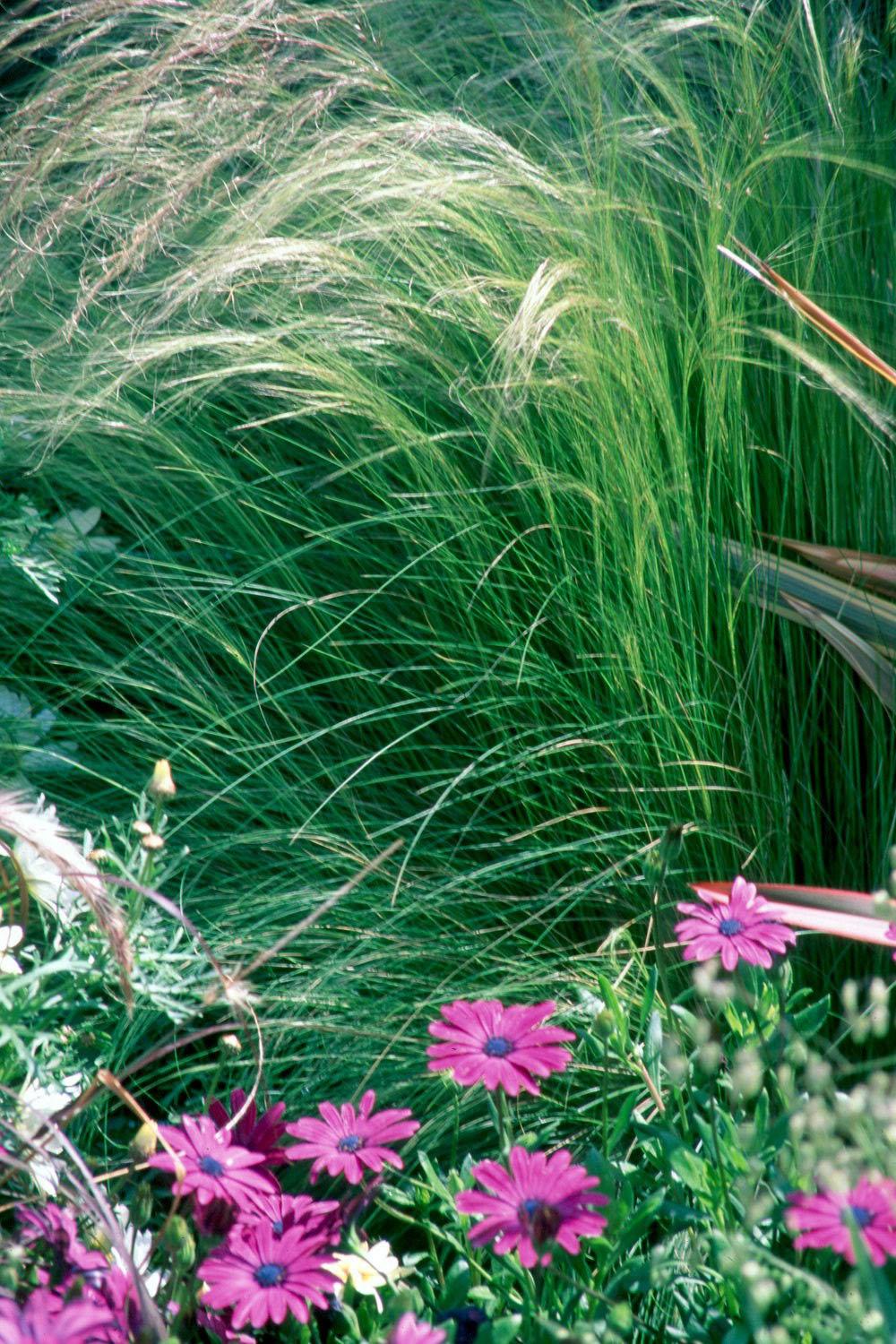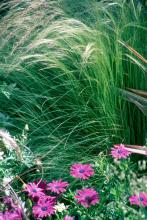Information Possibly Outdated
The information presented on this page was originally released on July 29, 2002. It may not be outdated, but please search our site for more current information. If you plan to quote or reference this information in a publication, please check with the Extension specialist or author before proceeding.
Mexican feather grass gives new garden look
By Norman Winter
MSU Horticulturist
Central Mississippi Research & Extension Center
Fountain, maiden and muhly grasses are among the most popular ornamental grasses, but watch for the new kid on the block, Mexican feather grass. The Mexican feather grass, known botanically as Stipa tenuissima, will bring an entirely new look to the garden.
Mexican feather grass is native in Texas, Mexico and parts of South America and will get 18 to 24 inches in height. The grass is mounding with needle-like leaves forming bright green clumps. The silky, hair-like flowers glisten in the light. It has shown cold-hardiness and also is a trooper in the sweltering hot summer. This is an environmentally friendly grass with virtually no pests or diseases.
Blooming grasses add a new dimension in the landscape. Vines add a vertical element, but grasses do something few people think about -- they move. A garden planted with several species of grasses close together performs a dance in the wind that no choreographer could duplicate. Back and forth they move as the wind dictates, slow and gentle, fast and swirling, mesmerizing everyone who is watching.
Grasses like the Mexican feather grass do something else incredible. When placed in the background where backlit from the setting sun or landscape lighting, they glisten like they have a small coat of ice. And speaking of ice, the frosty kiss of those cold fall mornings makes the ornamental grass the prettiest plant in the landscape.
Select a site in full sun, although they will tolerate light shade. The bed should be fertile and well drained. Amend the soil if needed with 3 to 4 inches of organic matter and till to a depth of 8 to 10 inches. While preparing the soil, incorporate two pounds of a slow release 12-6-6-fertilizer per 100 square feet of bed space.
It is more important with ornamental grasses than with almost any other plant to remove competing vegetation before planting. Many disgruntled gardeners find that aggressive Bermuda grass or vines make themselves at home intermingled in the middle of the ornamental grass clump. Apply a non-selective herbicide or remove with a hoe. It may take a second herbicide application.
Plant at the same depth they are growing in the container with the crown slightly above the soil profile. Space plants 12 to 18 inches apart. Apply a good layer of mulch after planting.
Cut back the grass in February before any new growth has begun. Trim back from ground level up to 12 inches, depending on the grass. After you cut back, side-dress with an application of the 12-6-6-fertilizer, then again in midsummer. Keeping the bed well mulched and watered during the summer pays off with a healthier looking plant.
The Mexican feather grass is striking planted alone or in large masses or drifts. The blooms are almost indescribable when backlit by the setting sun or landscape lighting, so take advantage of this if possible. Use with other ornamental grasses like muhly, purple fountain or Karl Foerster feather reed grass. They are quite at home in the perennial garden with the black-eyed Susan, purple coneflower and salvia.
Mexican feather grass is the leading common name, but if you see Texas needle grass, it should be the same. Regardless of the name, I know you will love it.








